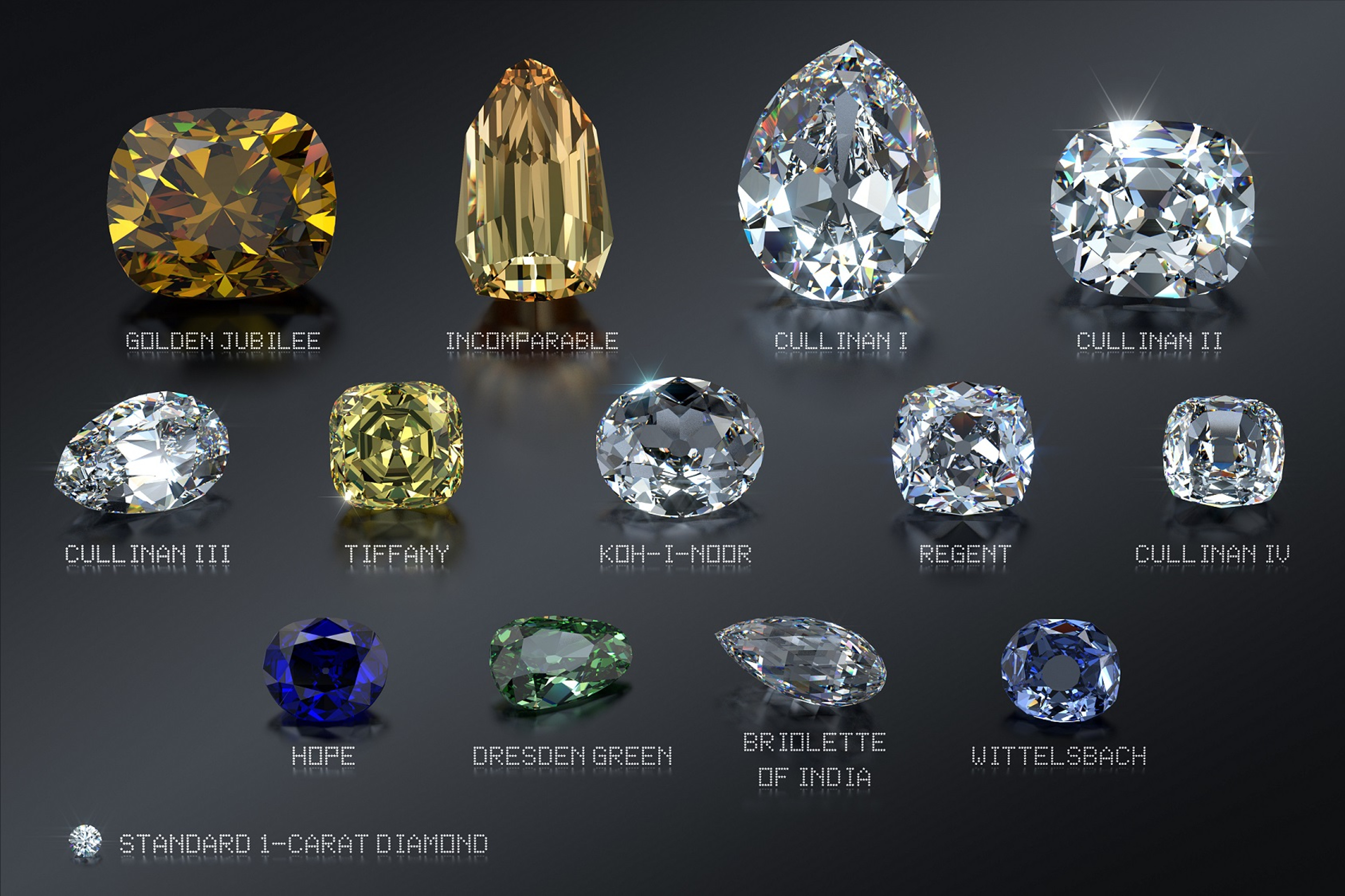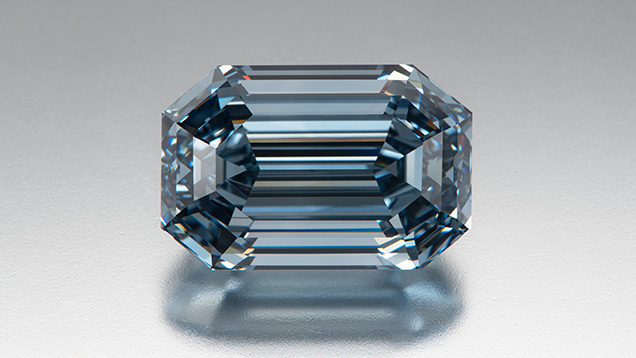Congratulations! You saved enough of your hard-earned cash to score an impressive 2-carat diamond engagement ring for your significant other. That sparkler probably looks gigantic on their finger, but it’s nowhere near the weight of other stones that have been unearthed over time. What are some of the largest diamonds in history? We’re so glad you asked! We’re about to tell you.
ROUGH VS. POLISHED DIAMONDS
Before we go any further, let’s clarify a couple of important terms. Our list features rough and polished diamonds. But what does that actually mean? “Rough diamonds” refer to gems in their natural form, or how they look after developing beneath the Earth’s surface billions of years ago. “Polished diamonds,” on the other hand, are essentially rough diamonds that have been deemed “gem-quality” and cut into the stunning versions that you find in engagement rings. As you’ll see, the cutting process is very precise, and jewelers sometimes take years before producing a finished gem.
Now that you know the difference, let’s start digging into those massive stones!
LARGEST ROUGH DIAMONDS
Cullinan Diamond: This gem is widely acknowledged as the biggest diamond ever discovered, and it was pretty much found by accident. Back in 1905, the superintendent of a South African mine was conducting an ordinary inspection, when he caught sight of the stone twinkling in the wall of the mine. It weighed more than 3,100 carats (approximately 1.33 pounds) and was named after the mine’s owner, Sir Thomas Cullinan, who also happened to be at the mine that day. A couple of years later, the gem was given to King Edward VII of the United Kingdom as a 66th birthday gift. It was eventually divided into nine large stones and nearly 100 smaller stones.
*Fun Fact: Despite its incredible size, some experts think the diamond was just a piece of an even bigger stone!
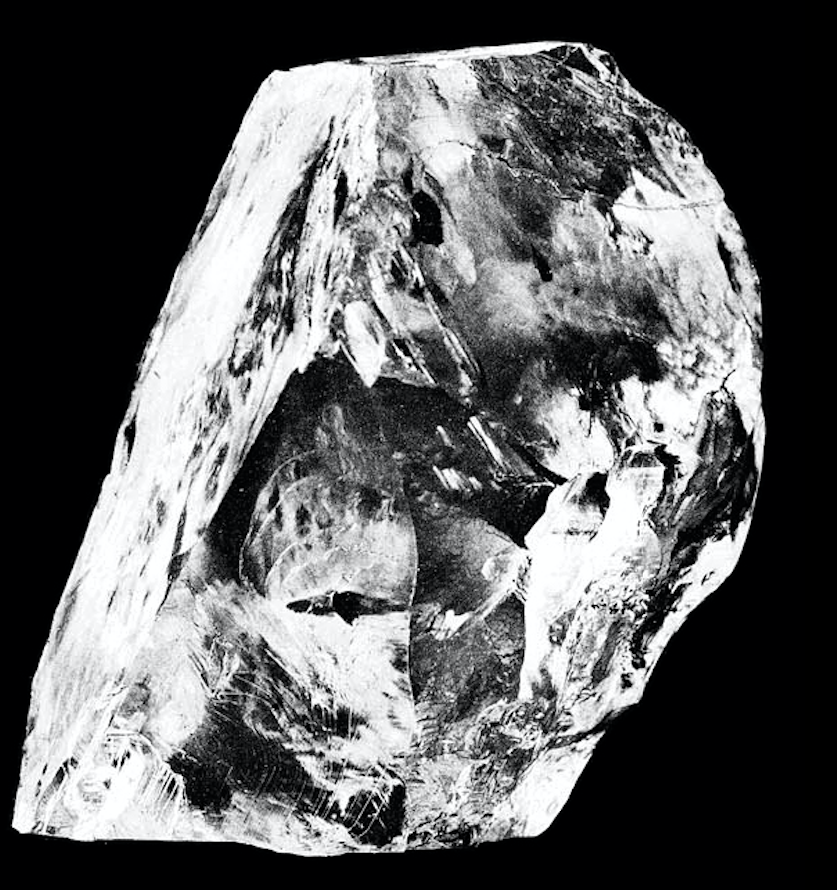
Rough Cullinan Diamond (Unknown Artist)
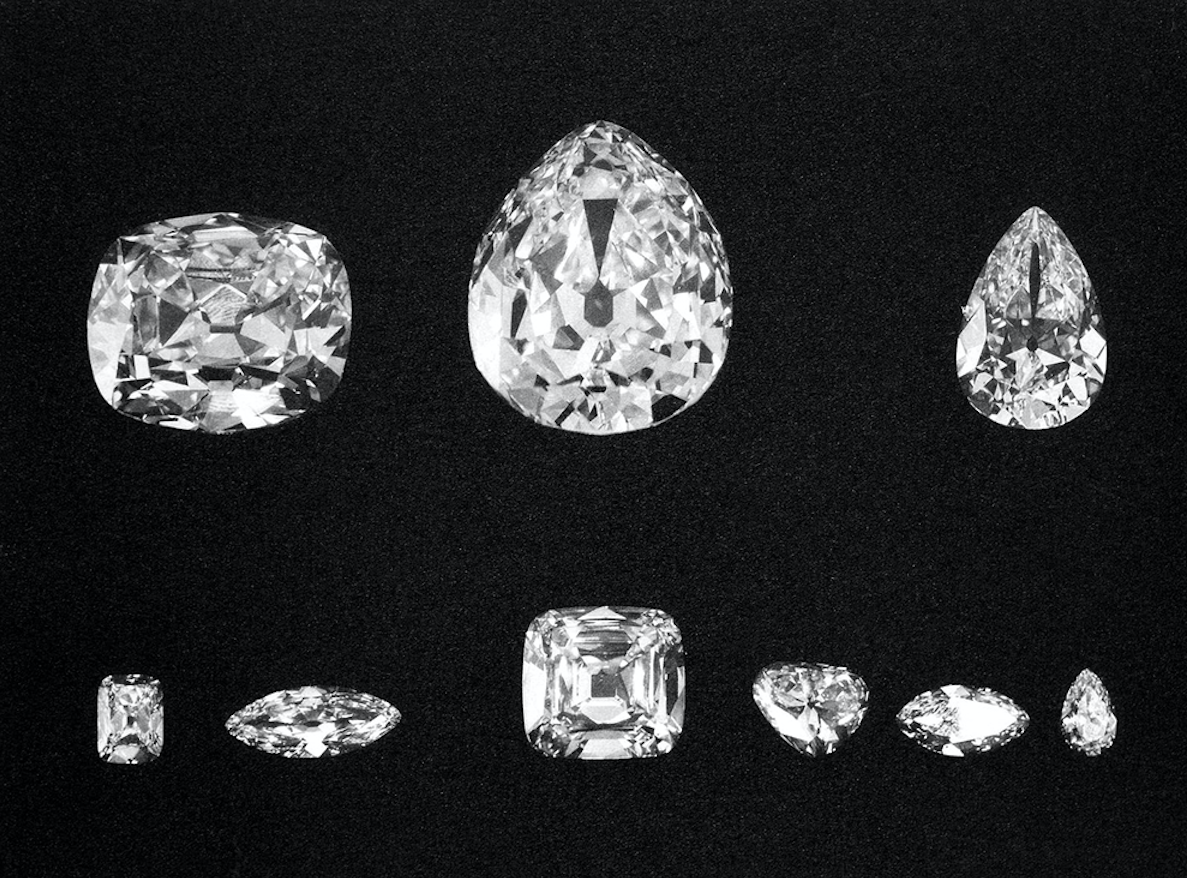
The Nine Largest Stones Cut From the Cullinan Diamond (Unknown Artist)
Top Row (L to R): Cullinan II, I and III, Bottom Row (L to R): Cullinan VI, VIII, IV, V, VII and IX
Excelsior Diamond: Before the Cullinan Diamond came along, this rough gem was crowned largest in the world. Weighing nearly 1,000 carats, the blue and white tinted stone was also located in South Africa and named for its shape. It features a flat bottom and slightly narrows to form a peak at the top, symbolizing an upward motion — just like the definition of “excelsior.”
*Fun Fact: Similar to the Cullinan Diamond, the Excelsior was also cut into smaller gems. In fact, De Beers, a corporation specializing in diamond retail and manufacturing, reportedly showcased one of them at the 1939 World’s Fair in New York.
Millennium Star Diamond: When this gem was discovered in the Democratic Republic of the Congo in 1990, it registered at roughly 777 carats. If that’s not impressive enough, it became even more special once it was fashioned into a polished stone. Now owned by De Beers, the remarkable gem has been trimmed down to about 200 carats and currently ranks as the world’s biggest pear-shaped diamond that has received top color and clarity ratings by the Gemological Institute of America (GIA). Craftsmen spent more than three years perfecting its look.
*Fun Fact: Back in 2000, a laser beam shot through the Millennium Star Diamond to mark the opening night of London’s Millennium Dome (aka The O2), reportedly the world’s largest dome. The resulting rays of light illuminated the room.
Sergio Diamond: We hate to break it to you, but the Cullinan Diamond technically isn’t the largest rough diamond in history. The Sergio Diamond actually surpasses it with a weight of nearly 3,170 carats. So, why is this gem overlooked? Well, it’s basically a black diamond (aka carbonado), so it doesn’t match our idea of a standard, sparkling diamond. But it’s still stunning in its own way! Unlike some of the other diamonds listed so far, this black/charcoal beauty was found in Brazil during the 1890s.
*Fun Fact: Scientists are still unsure how carbonadoes came to exist!
Victory Diamond/Woyie River Diamond: You might come across two different names for this sparkler, but both will ultimately lead you to a hefty 770-carat rough diamond that was discovered during the 1940s in the Woyie River, located in West Africa. It’s significant because it’s labeled as one of the largest alluvial diamonds of all time. What does that mean? Most natural diamonds are found beneath the Earth’s surface. But over the years, some have been transported to beaches and riverbeds due to rain, wind and other natural elements. These are called alluvial diamonds.
*Fun Fact: Once this particular gem was fashioned into a polished, emerald-shaped stone, it was called the “Victory Diamond” to celebrate the victory of the Allies in World War II.
LARGEST POLISHED DIAMONDS
Golden Jubilee Diamond: The yellow-brown stone holds the record as the biggest faceted diamond throughout time. It originated as a 755-carat gem — containing several cracks and imperfections — in a South African mine. After a couple of years of work, it became a beautiful, nearly 550-carat diamond that’s currently a piece of Thailand’s crown jewels. You can see it at Bangkok’s Royal Museum at Pimammek Golden Temple.
*Fun Fact: How did this stone get its fun name? In the mid-1990s, several businessmen purchased the diamond to commemorate the 50th anniversary of Thailand King Bhumibol Adulyadej’s reign (aka his golden jubilee).
Cullinan I: Remember how the rough Cullinan Diamond was separated and transformed into nine large gems? Well, this is the biggest of that group, weighing 530 carats. In fact, it’s recognized as the world’s largest polished diamond that doesn’t exhibit any color. Also known as the Great Star of Africa, this gem has a pear shape and nearly 75 facets – the flat, polished surfaces that reflect light through the stone. For reference, normal round brilliant cut diamonds contain almost 60 facets. So, this beauty is extra sparkly!
*Fun Fact: After the original Cullinan Diamond was given to King Edward VII, it remained with future British monarchs, including the polished versions. The Cullinan I is currently housed at the Royal Palace, and it has been incorporated into the official scepter that’s used at coronations.
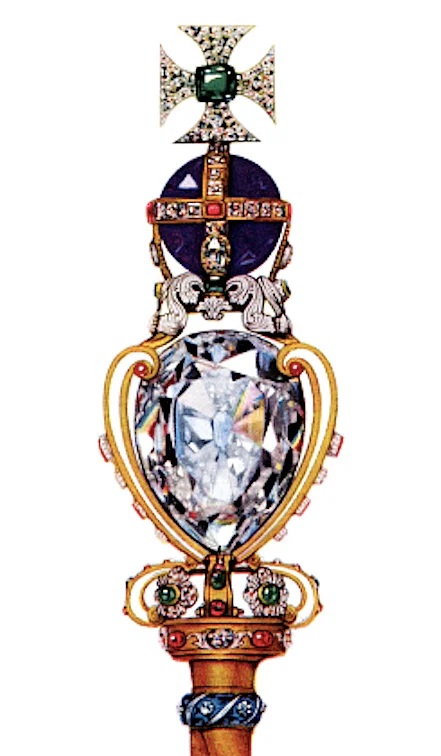
British Sovereign's Sceptre with Cullinan I Diamond (Unknown Artist)
Cullinan II: This is exactly what you’re probably thinking. It’s another gem that was created from the rough Cullinan Diamond. So, how is it different than Cullinan I above? For starters, it’s sometimes referred to as the Second/Lesser Star of Africa. That’s because this cushion-shaped stone weighs significantly less — only about 320 carats. And with 66 facets, it won’t sparkle quite as brightly.
*Fun Fact: This diamond is also part of the British crown jewels. It’s specifically featured in the official scepter and British Imperial State Crown, which is worn during coronations. You can spot it just beneath the Black Prince’s Ruby.
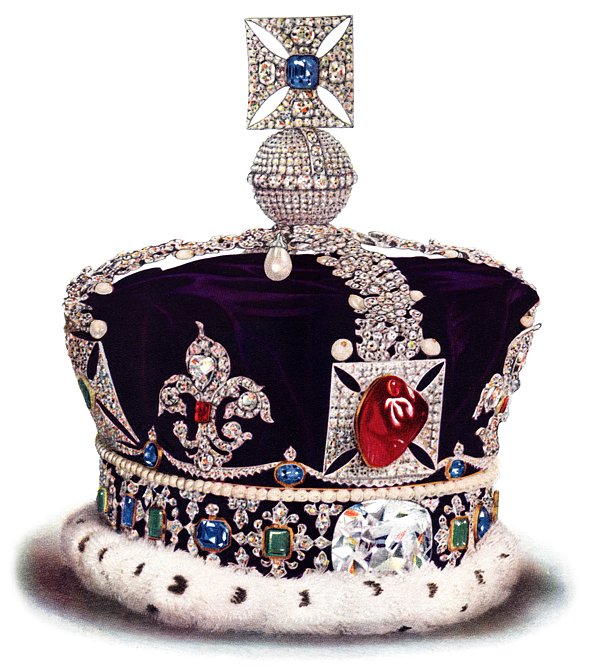
British Imperial State Crown with Cullinan II Diamond (Cyril Davenport)
Graff Lesedi La Rona: Experts believe this stone is roughly 2.5 billion years old, but it wasn’t discovered until 2015 in Botswana. It weighed a whopping 1,109 carats in its natural form, making it one of the largest rough diamonds in history. But the polished version is also noteworthy. A group of craftsmen and gemologists got to work and spent 18 months splitting this gem into nearly 70 smaller stones. The biggest was a stunning 302-carat diamond that turned out to be the world’s largest asscher-cut stone.
*Fun Fact: This asscher-cut sparkler also received top color and clarity gradings from GIA.
LARGEST FANCY COLOR DIAMONDS
De Beers Cullinan Blue: This special diamond was discovered in April 2021 in South Africa’s Cullinan mine. In its natural form, the rough, blue stone weighed almost 40 carats and was purchased by De Beers Group and fellow diamond manufacturing and retail company Diacore. They transformed the diamond into a 15.10-carat, polished, blue gem that features step cuts, meaning the diamond’s flat surfaces are arranged like steps.
*Fun Fact: Blue diamonds are quite rare. They’re actually among the rarest colored diamonds, along with red and pink diamonds. In the auction world, only five blue diamonds weighing between 10 and 15 carats have ever been sold. This one was the largest, and it sold for $57.5 million last year.
Photo by Towfiq Ahmed
Lulo Rose: Speaking of rare pink diamonds, this gorgeous gem, boasting the perfect shade of pale pink, weighs 170 carats and was unearthed in southwestern Africa's Lulo alluvial diamond mine. According to the Lucapa Diamond Company, which owns the mine and announced the “exceptional” find last year, the gem is reportedly the largest of its kind in 300 years! After it gets cut and shaped into a polished diamond, experts predict that it will sell for millions of dollars when auctioned.
*Fun Fact: GIA has indicated that fancy color diamonds make up just 0.001% of the millions of diamonds mined annually. And of that 0.001%, only a small fraction qualify as pink diamonds.
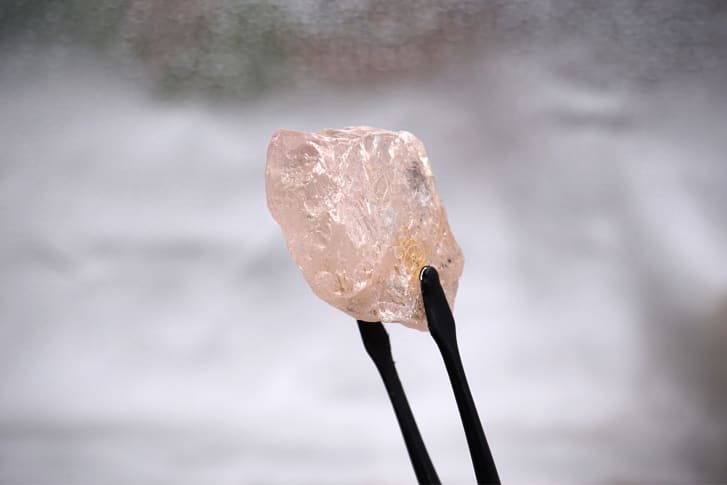
Photo by Lucapa Diamond Company
Moussaieff Red: What about the biggest, exceptionally rare red diamond? That title goes to the Moussaieff Red, which was reportedly discovered by a Brazilian farmer during the 1990s. The stone was originally about 13 carats, but it has been fashioned into a gorgeous 5-carat triangular-shaped stone.
*Fun Fact: The gem is said to be worth a jaw-dropping $20 million!
Have a question? We can help!
Gage Diamonds is Chicago's premier jewelry showroom and online retailer of engagement rings, wedding bands, and fine jewelry. We offer a selection of dazzling handpicked diamonds, including certified natural and lab grown diamonds.
We’re committed to helping you find the ring of your dreams. For inspiration, browse our selection of natural and lab grown diamonds, or set up an appointment with a member of our trusted staff at our in-person showroom.
We offer no-credit-needed financing – feel free to apply and get your approval within 24 hours!
Pay over time, because love shouldn’t wait.
